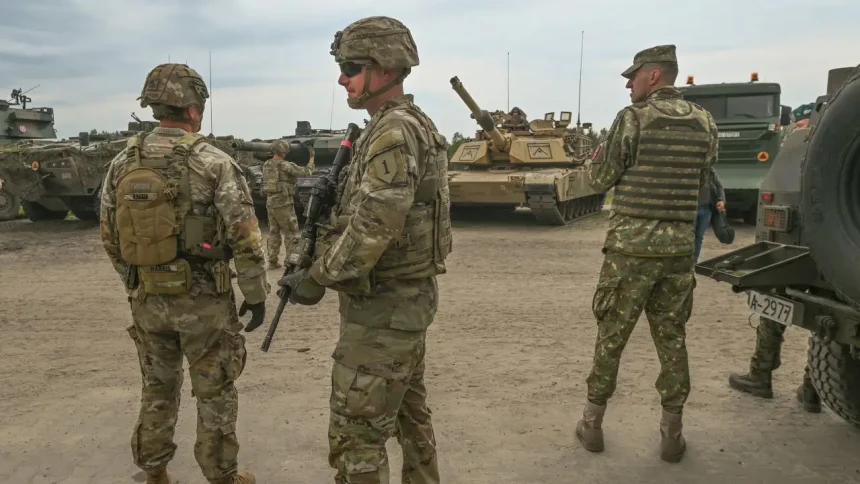Real-time information from the field would help military leaders decide more quickly.
The Senate is pushing the Pentagon to make “wearable” brain sensors powered by AI as soon as possible. These sensors would send information to leaders about the physical and mental health of troops in the field.
The Senate Armed Services Committee released its annual defense policy bill this month. It came with a report that said senators from both parties want the Pentagon to move faster to get this AI technology to possibly hundreds of thousands of U.S. warfighters.
In its report on the National Defense Authorization Act (NDAA), the committee said, “The committee encourages the Under Secretary of Defense for Research and Engineering to speed up funding for the development of dual-purpose wearable neural biosensor technologies through the National Network for Microelectronics Research and Development.” This would help a broader transition to the services.
The report said that an Army office that makes standards for soldiers in the field and a joint office that deals with a wide range of defense tools are working on the kinds of biological data that they want these sensors to report. The Pentagon wouldn’t tell Fox News Digital when this work might be done, but they did explain how an AI analysis of data collected by these tools could help military leaders make decisions.
A Defense Department spokesperson told Fox News Digital, “wearable systems collect real-time data from warfighters that can tell them and their commanders about important performance predictors like fatigue, dehydration, nutritional status, heat stress, illness, or possible exposure to harmful chemicals or biological organisms.”
The Senate study said that AI-powered monitors could be used by security forces, pilots, and drivers of robotic systems to track this kind of data. Senators thought that someday, they could be used to track and evaluate information about “500,000 warfighters.”
Some Congress members are still looking for ways to ensure these AI systems are safe and work well, but the Senate wants to use them anyway. Senate Majority Leader Chuck Schumer, D-N.Y., still talks about an AI bill, but he has said that before putting out a statement, he wants senators to meet with more experts in the fall.
Just last week, President Biden said that seven AI makers had decided to make safe, secure, and reliable AI systems by following some rules.
But politicians are also under a lot of pressure to ensure that the U.S. starts using AI systems to stay ahead of China and other enemies. For example, The NDAA passed by the House tells the Navy to use AI in its operations plan, means the Army to make driverless battle vehicles, and tells the whole department to look into how AI can improve U.S. national security.
So far, the Pentagon won’t need much convincing to use this new technology. In January, the Army said it had recently announced a contract opportunity for a company to look at various automation chores using AI and machine learning and another contract opportunity for companies making personal radiation monitors.
“Trusted AI and autonomy technologies could help the Army streamline several tactical processes,” said Dr. Matt Willis, who is in charge of Army prize events in the Office of the Assistant Secretary of the Army for Acquisition, Logistics, and Technology. “We need to make sure that soldiers have the latest in technology and strategy.”
Stephanie Brown, who is in charge of the Army’s “enhanced soldier” program, said in June that AI and machine learning are being used to collect and use a wide range of data about the fight and the troops themselves.
“The Army needs technology that can sense everything about the battlefield, including the soldiers themselves, in real time,” she told Fierce Electronics. “Along with sensing, we need to make AI/ML algorithms to help us understand the data we’re gathering.”
“In general, this could help us protect our people and keep our soldiers from getting hurt or in danger,” Brown said. “For example, some of the wearable sensors could help monitor health and care for injured people. This could include triage information that would help medics identify, classify, and treat injuries.”















